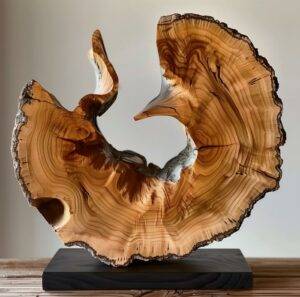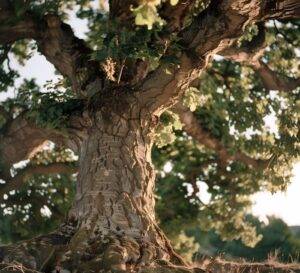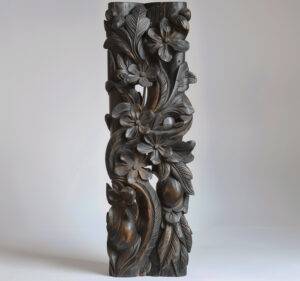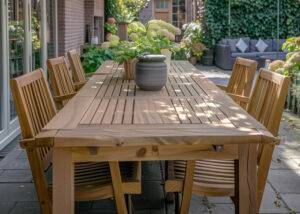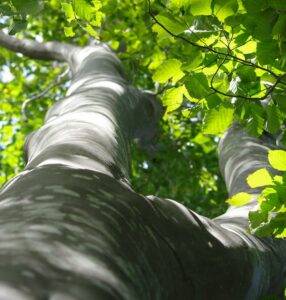Wenge
Wenge, a decorative precious wood, is enjoying growing popularity, which has led to increased demand in recent years. Due to this popularity, the tree is now considered protected and should only be sourced from sustainable forestry. The unusual, dark coloring is reminiscent of coffee and chocolate.
Originally native to tropical rainforests in the central Congo basin, wenge trees prefer moist soils and are now often cultivated as park or avenue trees. The wood, a striking coffee brown to dark brown with black veins, is characterized by large pores and straight fibres. It is also weather-resistant and insensitive to water.
Wenge wood is valued as a valuable veneer wood in furniture construction and also provides fine inlays for chessboards. As solid wood, it is used for gun stocks, knife handles and shaving brush handles. It is imported into Europe in limited quantities and is subject to special regulations.
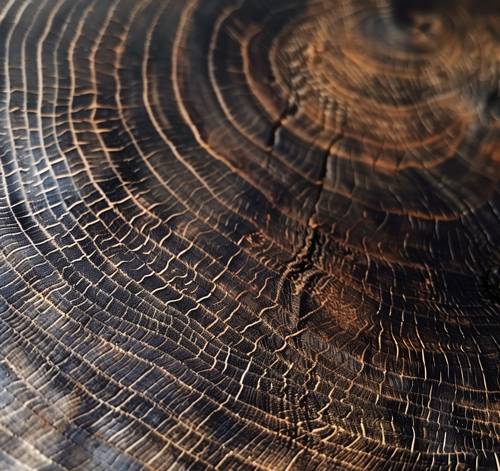
Quick overview for Wenge wood:
- Wenge wood is an exotic hardwood from Africa with unique properties.
- The colour of wenge wood varies from dark brown to black, with a striking grain.
- Wenge wood is very hard and dense, making it an ideal material for furniture and flooring.
- Wenge wood is typically used in high society and art, as it is considered luxurious and exclusive.
- When using wenge wood, sustainability and responsibility are important in order to protect the environment.
What is wenge wood?
Wenge wood comes from the tropical rainforests of Africa, particularly from countries such as Cameroon, Gabon and the Congo. It is a hardwood with a dense structure and a dark color. The trees can reach a height of up to 30 meters and have a diameter of around one meter.
The characteristic color of wenge wood varies from dark brown to black, with striking black stripes or spots on the surface. These patterns give the wood a unique aesthetic that sets it apart from other types of wood.
The colour and grain of wenge wood
The dark colour of wenge wood gives it an elegant appearance that goes well with modern design. The grain of the wood is also remarkable – it consists of contrasting stripes or patches that give the material depth.
Compared to other types of wood, wenge has a particularly striking grain. It can be compared to woods such as mahogany or ebony, but its unique colour and patterning make it a preferred choice for those looking for an eye-catching design.
The hardness and density of wenge wood
Wenge wood is known for its exceptional hardness and density. It is one of the hardest types of wood in the world and is highly resistant to wear and damage. These properties make it ideal for use in furniture, especially in high-traffic areas such as table tops or flooring.
Compared to other types of wood such as oak or maple, wenge is significantly denser. This means that it is less susceptible to warping or cracking and has a long service life.
Wenge wood in furniture production
The use of wenge wood in furniture production offers both advantages and disadvantages. Due to its hardness and density, it is ideal for durable pieces of furniture that can be subjected to heavy use. It adds a touch of elegance and sophistication to any room.
One downside to using wenge wood, however, is that it is relatively expensive. Due to its limited availability, the price can be higher than other types of wood on the market.
Examples of furniture made from wenge wood include dining tables, cabinets or bed frames with a modern aesthetic. The dark colour and striking grain make each piece an eye-catcher.
Wenge wood in high society
Wenge wood has a long history in high society and was often used for high-quality products. In past centuries, it was a symbol of wealth and prestige, as it was only accessible to the wealthiest people due to its limited availability.
Nowadays, Wenge wood is still used in luxury products, such as exclusive furniture or interiors of luxury hotels or yachts. It radiates elegance and adds a touch of class to any room.
Wenge wood in art
The use of wenge wood in art is widespread, especially in sculptures and other three-dimensional works. The dark colour of the wood provides an interesting contrast to other materials such as metal or stone.
Examples of works of art made from wenge wood include sculptures with abstract shapes or skilfully carved figures. The wood is easy to work with and allows artists a great deal of creative freedom in their projects.
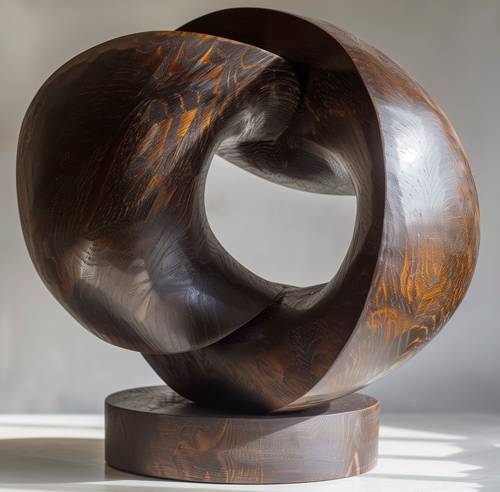
Sustainability and responsibility in dealing with wenge wood
Due to the limited availability of wenge wood, it is important to use it responsibly so as not to harm the environment. Sustainable sourcing of the wood is crucial to ensure that stocks are not depleted.
There are various ways to promote sustainable practices when dealing with wenge wood. These include supporting certification programmes for responsible forestry and promoting the cultivation of wenge trees in plantations.
Conclusion
Wenge wood is a unique material with a fascinating aesthetic and exceptional properties. Its dark colour and striking grain make it a popular choice for furniture, artwork and high-quality products.
However, it is important to use wenge wood responsibly to preserve its limited availability. Through sustainable sourcing practices and the use of certification programmes, we can ensure that this valuable material is available for future generations.
FAQs
What is wenge wood?
Wenge wood is an exotic hardwood that comes from the forests of Central Africa. It is known for its dark colour and unique grain.
What are the properties of wenge wood?
Wenge wood is very hard and dense, which makes it very resistant to wear and scratches. It also has a high natural resistance to moisture and pests.
What is wenge wood used for?
Wenge wood is often used for high-quality furniture, floor coverings, musical instruments and jewellery. It is also used in architecture and shipbuilding.
How do I care for wenge wood?
Wenge wood should be cleaned regularly with a mild detergent and a soft cloth. It should also be treated regularly with a wood care product to maintain its natural beauty.
Is wenge wood sustainable?
Wenge wood is not particularly sustainable due to its limited availability and slow growth. It is important to only buy wenge wood products from responsible sources and consider alternative materials.
